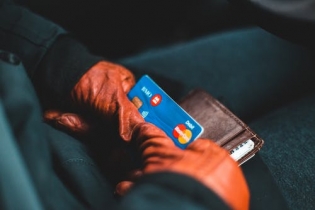There’s more to closing a credit card account than simply paying off the balance and cutting up the card. Get it right and you could preserve your credit score, as well as protect yourself from fraud and unexpected fees. Get it wrong and, well, you’ll open yourself to a potentially lower credit score, identity theft and responsibility for unexpected fees — as well as additional interest payments.
Here’s the right way to close a credit card account.
1. Weigh the Overall Importance of the Card to Your Credit History
“Length of credit history” is one of the factors FICO uses to calculate your overall credit score. The older an account is the better — especially when it’s always been properly managed. In fact, this factor alone comprises some 15 percent of your score.
Further, it plays into several other aspects of the calculation — including your payment history, amounts owed and types of credit you have. It’s important to ponder those considerations before choosing to close a credit card account at random.
2. Inform Authorized Users
Let everyone who has access to that account know you're planning to close it at least a month in advance. The last thing you want is additional charges to come in right after you’ve submitted the payoff amount. You’ll think the account is paid in full and there will still be a balance out there collecting interest.
3. Disable Automatic Payments
It’s easy to have recurring subscription fees linked to a card about which you’ve forgotten. After all, we just get used to Netflix and Spotify being on every month, without giving a thought to which card is feeding them. Again, though, if those charges come in right after you’ve submitted the payoff amount, the card isn’t paid off.
Conversely, if charges from those vendors come in after the account has been closed, payment will be refused and your subscriptions will be in jeopardy.
4. Harvest Your Rewards
In a lot of cases, rewards points you’ve accumulated will evaporate when you close the account. You’ve earned those perks, so why let them go to waste? Do whatever you can to redeem them. Or, see if you can get them transferred to another account.
5. Determine the Payoff Amount
There’s a difference between the balance due on your card statement each month and the account’s payoff amount. The balance due only takes into consideration purchases made before that statement was issued. There may have been charges after that statement was produced. Further, there may be cancellation fees, additional interest or other charges not reflected in that balance. These will be considered the outstanding balance on the next statement and begin to accumulate interest.
If you pay off the balance, cut up the card and forget about it, the debt could be growing in the background unnoticed. And, as these Freedom Debt Relief reviews illustrate, unpaid debt with compounding interest can lead to growing credit problems that are tough to get rid of after the fact.
6. Ask About the Closing Procedure
Get in touch with a customer service representative at the card issuer to learn their exact procedure for closing an account. Take careful notes and be sure to follow it to the letter.
7. Submit Payment/Notify Issuer
Once you’ve done all of the above, you can confidently submit the final payment — along with notification of your intention to close the account. You’ll be required to present notification in writing in most cases, so be prepared to do so. Take note of the date you submitted the cancellation request to be sure nothing comes in afterwards, of which you were unaware.
8. Confirm Closure and Zero Balance
Call back about a week later to confirm the account is closed and your balance is paid in full. It’s OK to trust that the issuer fulfilled your wishes, but it never hurts to verify they did what you asked either.
9. Cut Up the Card
Only after you’ve followed these other steps should you destroy the card, confident you’ve crossed every t and dotted every i, so to speak.








